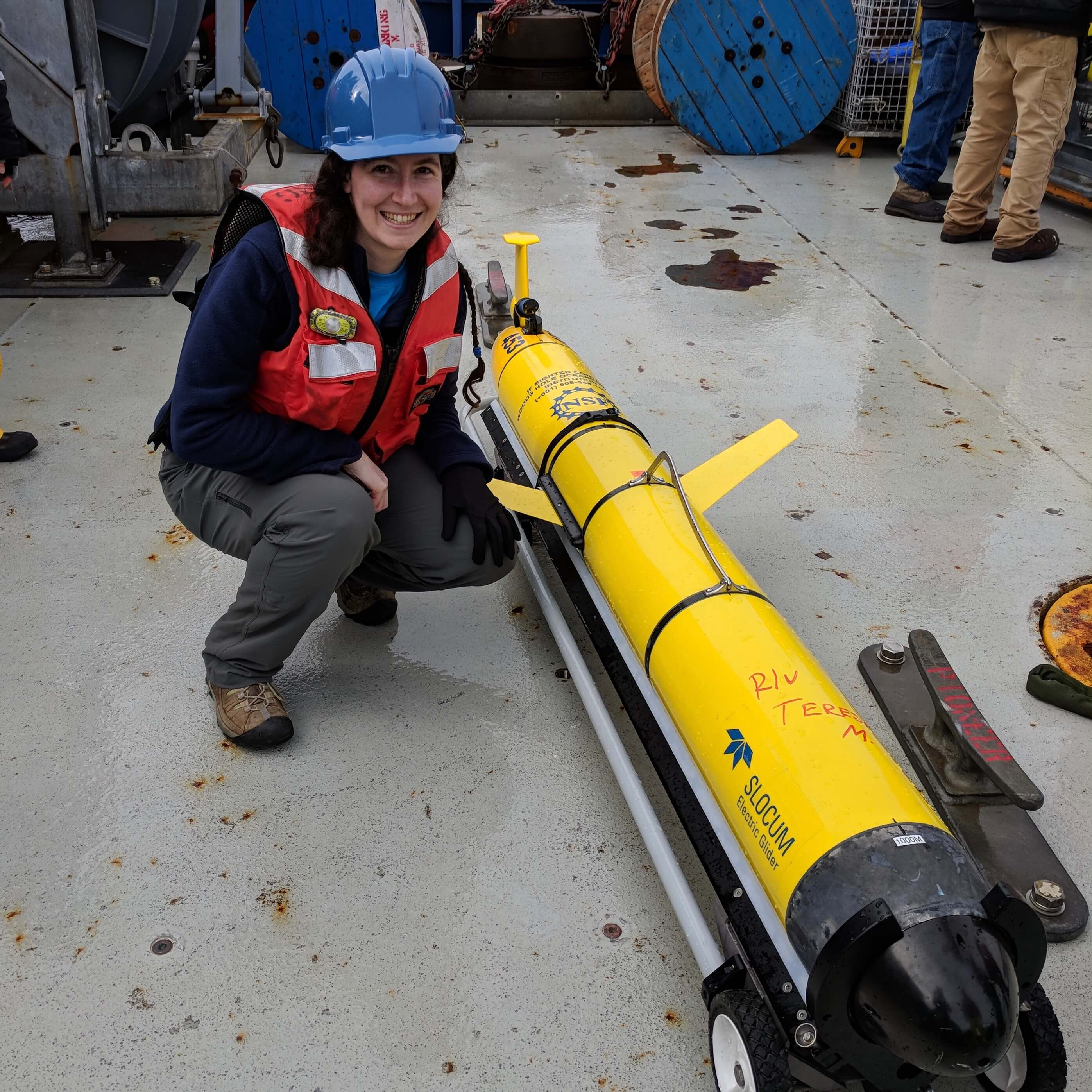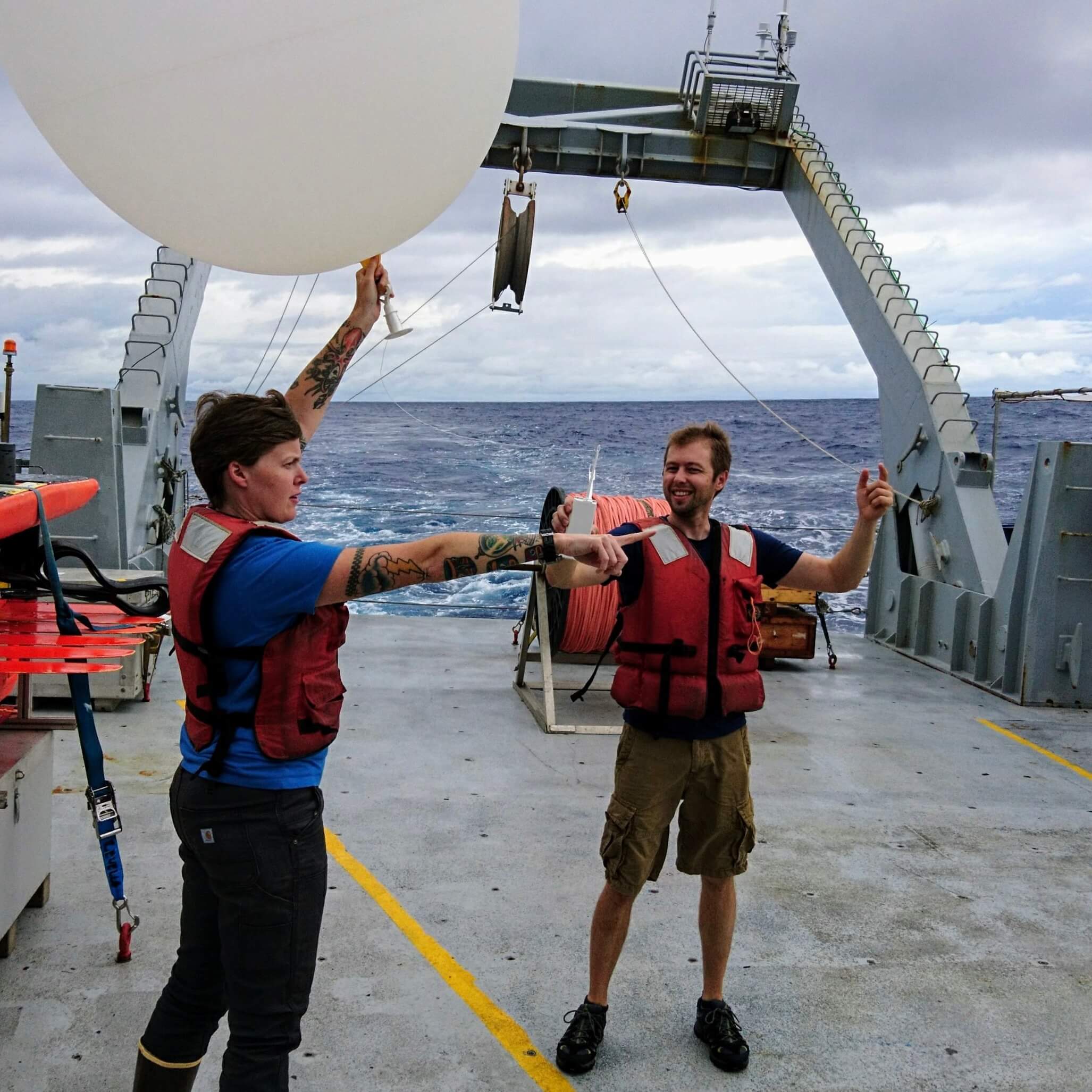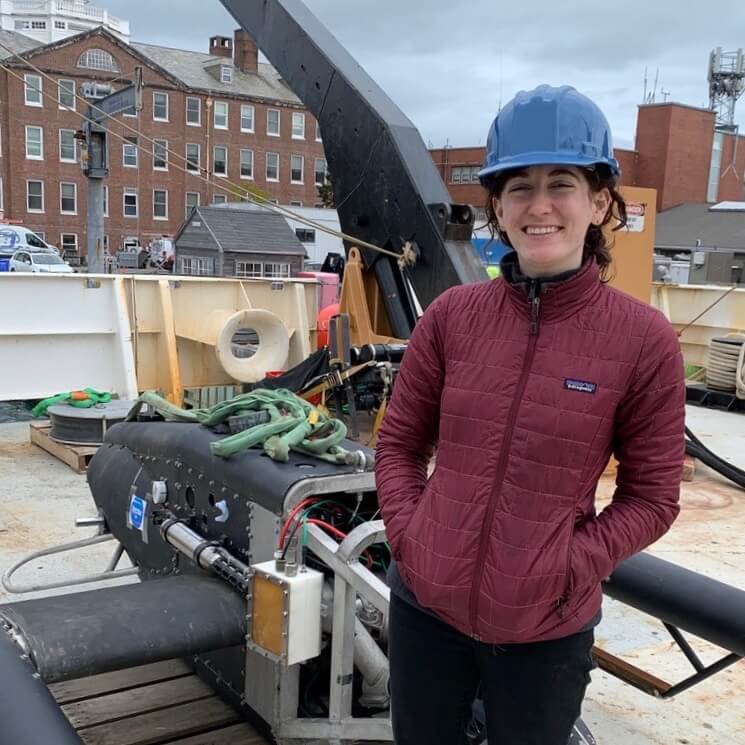Hilary Palevsky: From landlocked to ocean expert, teacher, mentor
Having grown up landlocked in Western Pennsylvania, Hilary Palevsky had never thought much about the ocean nor ever imagined studying oceanography. That all changed in her junior year of college when she participated in the Williams-Mystic Maritime Study Program. At the very beginning of the semester, she went to sea for 10 days aboard the Sea Education Association’s SSV Corwith Cramer. This experience turned out to be the perfect confluence of events for her future career path.
“I just fell in love with everything about the ocean – not only the science of it, but sea shanties, and maritime history and literature, “ explains Hilary. “I really wanted to do something about climate change. Realizing that the ocean plays this totally dominant role in the Earth’s climate system on human-relevant time scales, I knew that’s what I wanted to do.”
After graduating from Amherst College, she wasn’t sure what direction she would pursue but whatever it was, it would be ocean-related. Hilary took on a fellowship to study interactions between policy, science, and stakeholders through the lens of North Atlantic cod fisheries. She traveled all over the north Atlantic coast talking her way on to fisheries research vessels and small fishing boats. (As a 20-year-old woman, the former was easier than the latter). She also gave K-12 marine science education on traditionally-rigged schooners a try before she stepped on the path to getting a PhD in oceanography and a graduate certificate in climate science at the University of Washington.
Hilary is now an assistant professor at Boston College. Her research focuses on how the ocean takes up carbon dioxide from the atmosphere and the chemical, physical, and biological processes involved. A through line for her research are places that have strong seasonal cycles, which is how she came to work with OOI data. She was interested in getting measurements of how much carbon the ocean was taking up throughout the seasonal cycle in the subpolar North Atlantic. “There is a really interesting and exciting interplay between biological processes – a huge spring bloom in the North Atlantic—and physical processes, where there’s really deep winter mixing.” To understand how these two interact requires having measurements throughout the year. OOI makes this possible by continuously collecting this data, including times when it’s too cold and stormy to be out there on a boat.
Mentoring makes a difference
A major part of Hilary’s professional life now revolves around teaching. She is one of those exceptional teachers who makes science accessible and interesting. Hilary is also one heck of a mentor.
“My understanding of mentorship and role modeling have changed over time. I didn’t feel like the gender identity of my mentors mattered to me [as an undergraduate] because I had awesome women mentors. I had a great undergraduate senior research advisor, for example, who modeled other things [than just research] for me. She was married to another woman, I met and got to know her wife. From her, I learned how to figure out how to be a person doing science rather than a scientist trying to be a person.” Hilary actually met her spouse for the first time in her advisor’s office!
Having such mentoring and role model representation early on in her career were particularly important to Hilary as a woman and a queer person. She didn’t experience the barriers that often exist because she had role models who demonstrated how she could survive and thrive in the scientific academic community.
“It was only later on in my career, when all of my advisors were straight men, that I recognized that there was really something important about my early mentors. But today I also recognize that all of my mentors have provided important things along the way. I have had male mentors who have been great role models for me as a woman. I’ve had straight mentors who have supported me as a queer woman with a spouse who is transgender.”
Hilary’s experiences have made her adamant about the importance of being a good mentor, particularly for people who don’t share the same identities. “I think about myself as a white woman who now mentors undergraduate and graduate students in a field that is overwhelmingly white. I constantly ask myself what do I have to do to be an effective mentor to students of color and coming from backgrounds and identities that are different from mine?”
Until a truly inclusive and diverse science community exists, Hilary believes it is imperative that leaders in academia find ways to be effective mentors for people who don’t either look like them or share some or all of their identities. “While the Geosciences has made some progress in gender parity, the representation of people of color has not made the same gains. The fact that I as a white woman have a faculty position shows there’s been progress, but we have to start making this happen for Black women, Indigenous women, trans women, all of whom haven’t been making these same gains as white women.”
Profiles of Other Exceptional OOI Women



